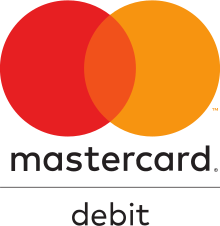Shopping For Legal Cannabis
Ask a Bud: Cooking with Cannabis
Whipping up staples like cannabis oils and butters or homemade edibles can be an exciting way to enjoy cannabis products. Mike Misek from HiBuzz Cannabis serves up some tips on where to start and how to choose the right cannabis products for cooking.
“Cooking with cannabis allows you to make ANY recipe into an edible”

Mike Misek
Budtender at HiBuzz Cannabis
Curious about cooking with cannabis but not sure where to start? Whether you’re a home baker keen to experiment with dried flower in the kitchen or just an avid eater seeking easy ways to infuse your favourite foods with oils and extracts, we’ve got the answers to your FAQs about cooking with cannabis, courtesy of budtender Mike Misek of HiBuzz Cannabis.
What makes cooking with cannabis so popular?
If you’re a consumer who love edibles or you’re looking for smoke-free consumption methods, “cooking with cannabis can save [you] money,” says Mike Misek of HiBuzz Cannabis. “It may take a little work, but the savings are big enough to be worth your time. Plus, cooking with cannabis allows you to make any recipe into an edible.”
How do I choose products that
are ideal for cooking?
“I usually direct my customers towards infused oils when first starting their journey into cooking with cannabis. Cooking with cannabis oils really doesn’t require as much time and they are very accurate when dosing,” says Mike. “I recommend using oils with cold elements of a recipe or the part of the recipe that sees the least amount of heat to avoid degradation of cannabinoid content. For instance, you could add cannabis oil to an infused aioli, or fold the cannabis oil into the frosting when baking brownies.”
The alternative is to infuse raw ingredients, like fat or oil with dried flower, to create “cannabutter” or an infused olive oil. This infusion can then be used as an ingredient in your favourite recipes.
Did you know?
Prior to cooking, dried cannabis must be heated for the cannabinoid tetrahydrocannabinolic acid (THCA) to be converted to psychoactive tetrahydrocannabinol (THC) — which is what occurs when it’s exposed to heat during smoking. This process is called decarboxylation, or “decarbing.”
Learn more about how to make your own edibles here.
What types of bud are best for
making cannabutter or infused oils?
“The qualities you’d look for in a great flower to smoke (high terpene content and great bag appeal) should complement other ingredients. Terpenes are not ingested in the same way when eaten as they are when they are inhaled. You do not have to worry about your starting material being indica, sativa or hybrid as the effect of the edible will be the same from all three.
“When purchasing bud to cook with, I recommend shopping for price over quality or potency per gram. Consider THC and CBD total content and how you can achieve your desired dose at a reasonable price.”
What’s the shelf life for homemade infusions?
“Keep in mind that adding plant material to a carrier like butter or oil will change the standard shelf life. To maximize freshness, you can refrigerate or freeze edibles — this will not affect the potency of your edible, and if your edibles are freezer safe, they will last for quite some time.”
Looking to incorporate cannabis into the menu for your next party or get-together?
Learn more about entertaining with cannabis here.
When cooking is complete, be sure to label any homemade infusions appropriately and include ingredients and dosages for future reference and to avoid unintended consumption. Better still, place all infusions in child- and pet-proof storage containers and keep the containers in hard-to-reach areas. And when you’re trying your creations for the first time, as always, start with a low serving. The next time you have some, you can try a bit more, but increase the amount slowly until you find the right dose.







